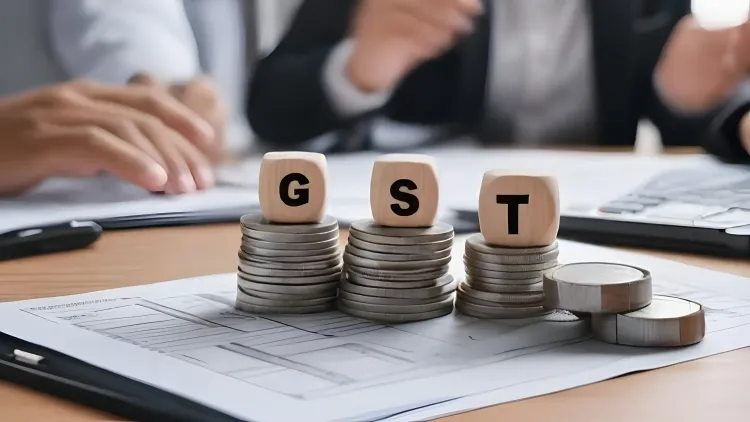Why Has RBI Reduced Its Inflation Forecast to 2.6% for FY26?

Synopsis
Key Takeaways
- Inflation revised down to 2.6% for FY26.
- GST reforms play a crucial role in this reduction.
- Food prices remain stable, supporting consumer purchasing power.
- Core inflation is contained at 4.2%.
- Future projections suggest potential volatility in Q4.
Mumbai, Oct 1 (NationPress) The Reserve Bank of India’s monetary policy committee (MPC) has revised its inflation projection for India for the financial year 2025-26, lowering it to 2.6 percent from 3.1 percent in August. This change is largely attributed to the GST rate reductions and favorable food price trends.
RBI Governor Sanjay Malhotra commented, “The recent GST rate adjustments are expected to bring down the prices of various items in the Consumer Price Index (CPI) basket. Consequently, we anticipate that the inflation results will be more favorable than the estimates provided in the August MPC meeting, primarily due to the GST modifications and stable food prices.”
During a press briefing following the MPC session, Malhotra noted, “The overall inflation outlook has improved significantly in recent months.”
Looking ahead to the second half (H2) of 2025-26, he mentioned that the beneficial effects of the southwest monsoon, increased kharif sowing, satisfactory reservoir levels, and a comfortable foodgrain stock are expected to maintain stable food prices.
The average headline inflation forecast for 2025-26 has been adjusted down from 3.7 percent and 3.1 percent projected in previous assessments to 2.6 percent.
Predictions for headline inflation in Q4 2025-26 and Q1 2026-27 have also been lowered, aligning with target figures despite some adverse base effects. Core inflation for this year and Q1 2026-27 is anticipated to remain contained.
Malhotra highlighted that headline CPI inflation dropped to its lowest in eight years at 1.6 percent year-on-year in July 2025, before rising to 2.1 percent in August—marking its first increase in nine months. The subdued inflation environment during 2025-26 has largely been driven by a sharp fall in food inflation since its peak in October 2024.
Inflation in the fuel category has fluctuated within a narrow range of 2.4-2.7 percent from June to August, while core inflation remained steady at 4.2 percent in August. Excluding precious metals, core inflation registered at 3.0 percent in August.
He also mentioned that despite the expectation of moderate growth in H2, significant negative base effects may exert upward pressure on headline CPI inflation, particularly in Q4. Taking all these elements into account, CPI inflation for 2025-26 is projected at 2.6 percent, with estimates of 1.8 percent for Q2, 1.8 percent for Q3, and 4.0 percent for Q4. The CPI inflation forecast for Q1:2026-27 stands at 4.5 percent.
Malhotra concluded by stating that the current macroeconomic environment and outlook have created an opportunity for policies that further support economic growth.









